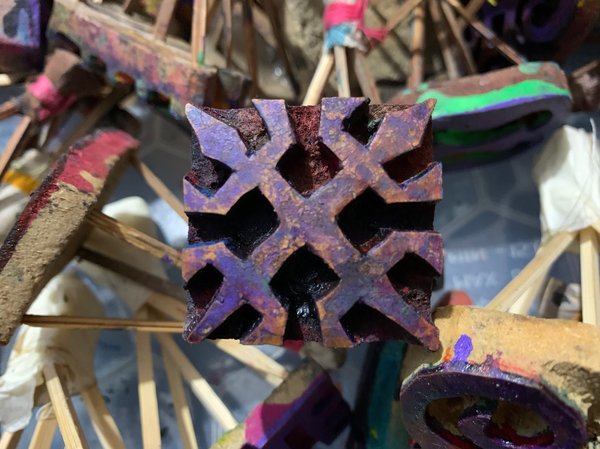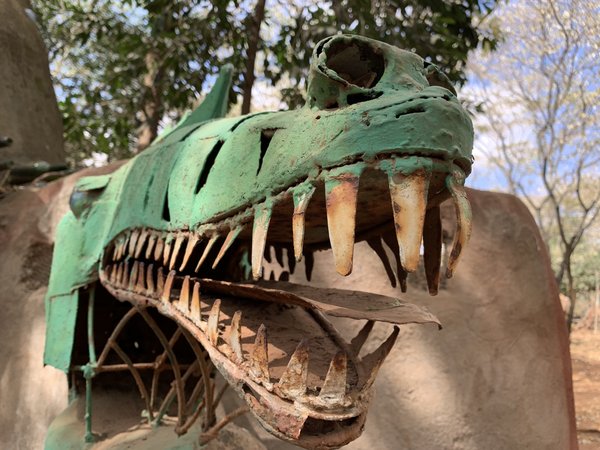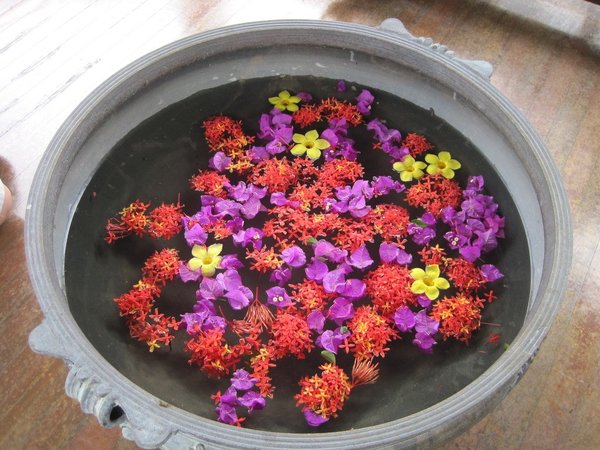
Photo by Gameli Tordzro for MIDEQ.
Hamadzi
Hamadzi, the unsung song
Travels the memory of our sons
Traversing time through melodies and rhythms
Harmonies in the sweet voices of our daughters
Into the lives of our grandchildren
And their own children
To birth Hamadzi into the distant future
Where memories rebirth the experiences
Of our ancestors’ language, and we become
We too become ancestors, remembered
Rebirthed and Carried into the future,
Carried in Hamadzi, sung in silent voices
Carried in the language of the ancestors
Spoken in new voices we are not meant to hear.
Sound, silence and movement
When we ʋlì or ʋã (move), it means we are alive. If we can ‘se’ (sense) le to me (hear), we can encounter the embodied experience of many sounds, and keep them as memories – a person’s voice, the rustle of leaves in the wind, the sound of the rain on the roof, a sigh, footsteps and the many sights and sounds of a journey lives on in our memories silently; angry shouts of people in conflict, dawn raids, gunshots, the clicks of handcuffs, the clanking metals of security gates; the sound of the sea waves crushing, forest birds even the silence – Doduizizi – in a big empty room.
These are just a few examples of the sounds of migration. Sounds physically reach us by migrating through ‘mɔnuwo’ – mediums, pathways, conduits, corridors or channel spaces, openings – from a source, vibrating the air around us to our eardrums. And so, movement and interaction form the experience.
The physicality of the experience is embodied in silence after the process of movement and interaction within our memory spaces like in the photographed moment, for example. Sometimes in the silence, the experiences become a dormant existence, until recalled and woken from the Ŋutefe Ʋɔdriba (memory dragon’s) den with a new sound; in music – a song, a little tune, rhythm on a drum, a flute the strumming of strings, bells, clapping the plucking of the mbira, humming, the watery sound of the calabash filled with compassion that is only expressible through music. Music lives as memory, as ‘Hamadzi’.
Hamadzi is the song before and after it is composed and sung, the resident sound of a drum before it is played or waiting to be played. It is the silent sound that resides in a singing voice, which makes the voice capable of song… it is memory – memory of the interaction between rhythm, breath, vocal cords, notes and pitch, melody and lyrics.
Memory as silence in migration
In the same way as when we migrate – and do so with physical objects – when we move, we move with our memories in silence. Memories of a past, carried in silence, including those we are unaware of, that have been handed down to us through ancestral genes, wait to be recalled and rebirthed as old-and-new experiences for ourselves and others when we interact. And when they are recalled, they migrate; they move from the realm of silence and stillness into our physical auditory sensorium of sound.
This sensorium perceived in Eʋegbe as ‘sèsèletome’ (sensing-within-the-ear) is therefore also a space of movement and migration. Thus, the value we and those we encounter when we move are placed on the memories we carry; are movement values of how those memories can be recalled from the past in silence, into a new experience in a new location, into the new context of present.
New contexts could be linguistic contexts. Memory created and preserved in silence in one language may be recalled into other languages we may have picked up in migration. And so, even though one may have created a memory in a language, at a later date, that memory can migrate into a new language in a different setting as one engages with other people in the languages one learns in migratory destinations. There are always difficulties, therefore, when our memories do not find an anchor in a new language and a new culture of expression when we attempt to recall them into the new language. In her paper ‘Multilingualism and Psychotherapy’, Beverly Coster mentions how a client 'switched languages to quote a painful memory'.
And so, in such circumstances, the arts can come to the rescue as language. Music has been well documented as possessing many communicative universalities. Remarkably I notice that after several years in Glasgow, dancing and singing which used to be a part of my everyday life has become almost completely silenced as an integral part of my everyday habit of expression.
The compassion of music in migration
Many a time, voices and how they are carried in mother tongues become silenced when people are forced to move. But silenced voices can be awakened as singular or as gathered voices from different eras, areas, and languages. Different experiences in concert with each other create new and memorable experiences to be shared with those encountered on migratory journeys and at the various migration destinations. Ha Orchestra is one such a gathering of different voices, sounds – their textures and experiences becoming awake in new contexts of the African diaspora in Europe.
Historical values carried in each musical instrument and the sound they make, alongside the spectacle they create, generate new and hybrid values in the contexts of the present. Music and musicality, therefore, is compassionate in how it anchors, holds and keep memories of experiences alive. From my compositions to how they are received and interpreted and rehearsed into memory by each musician on their instrument, to the combination of expressions synthesized in performance as well as the friendship spaces the orchestra instigates between musicians, new values are created through interaction. Equally, the same compassion is valued, offered and shared with audiences both in live performances and published recorded videos and audios of live performances available online.
An example of such new value is found in my composition and Ha Orchestra performance of 'Azorli Blewu’ expressing ‘journeying slowly’, which can be heard on the MIDEQ Hub moving animated map:
Do you have memories that have migrated with you from one place to another? From one language to another? Are there any memories you know you keep because they have never found expression in another language? Do you think they could be expressed in music, poetry, dance or painting? How would this relate to how your research in your migration corridors?
Cover photo: Gameli On Kora. Photo by Gameli Tordzro.



